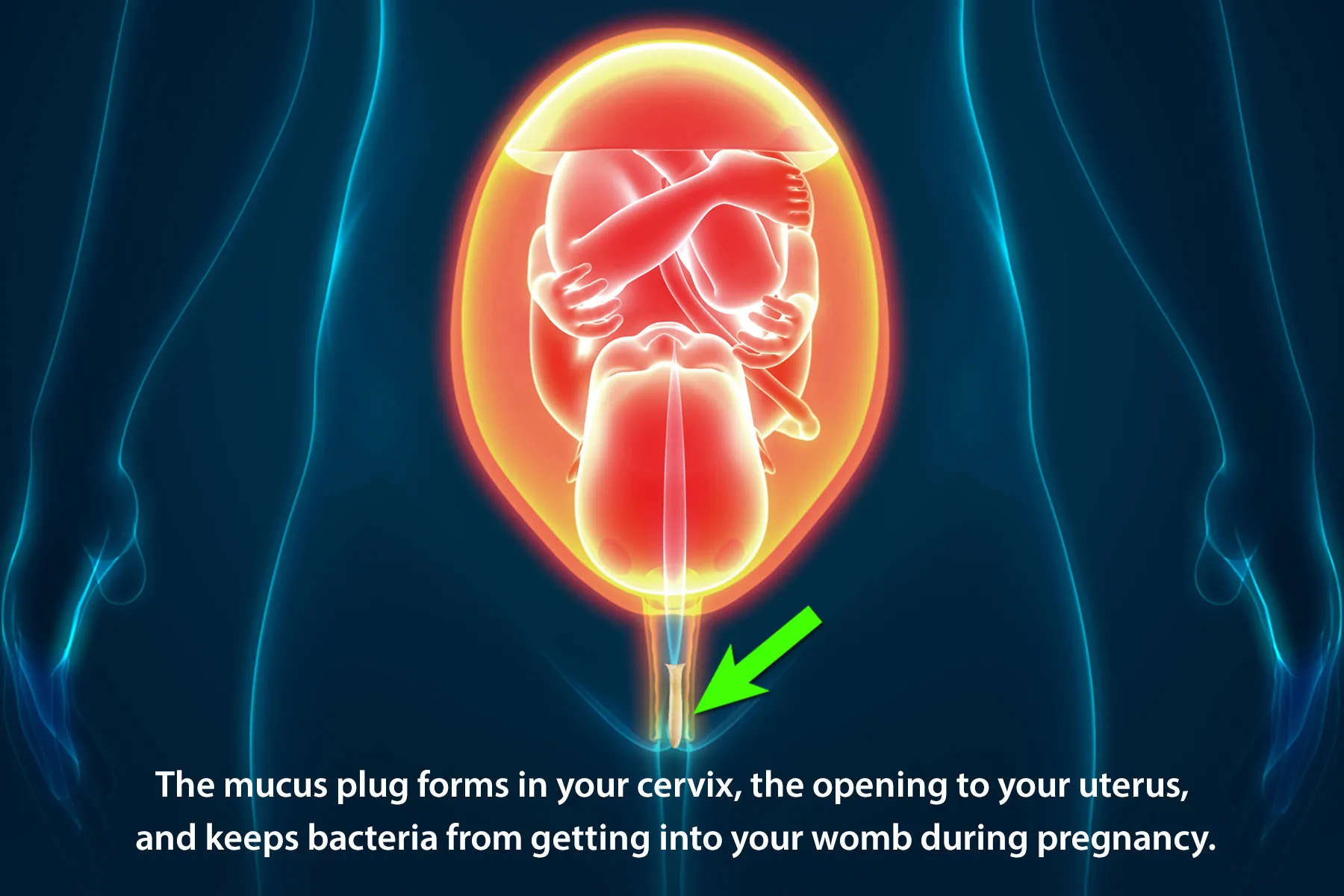The mucus plug is a protective layer made up of sticky mucus that seals the cervix (the opening of the uterus). The cervical canal produces this plug to protect your womb and unborn baby from bacteria that might affect your pregnancy. It also helps to keep your cervix moist. Your body might expel the mucus plug for various reasons.

What Is a Mucus Plug?
The mucus plug is a gel-like, reddish or brownish, sticky blob. You might notice it coming out of your body during labor or earlier in your pregnancy.
Most pregnant people don’t notice the mucus plug, especially if they discharge it during labor. It might come out in bits, clumps, or all at once. This might also happen when you are wiping after using the bathroom. You might find some discharge on your underwear. If it shows tiny blood spots, that's normal.
It is uncommon to lose your mucus plug before your body gets ready to give birth, but knowing how it looks might help you tell the difference between normal discharge and the mucus plug.
What does the mucus plug look like?
You might be expecting something solid, like a cork, but you are more likely to see stringy, gel-like bits. It might be clear, off-white, or a little bloody, with red, brown, or pink coloring. It won't look like period blood. It will look more like something you cough up during a cold. You might see a clump as big as one or two inches long, enough to fill one or two tablespoons.
Mucus plug vs. discharge
An increase in vaginal discharge is normal during pregnancy. The usual discharge is thin. The color is typically light yellow or white. The discharge from the mucus plug is likely to be heavier, thicker, more gel-like, and tinged with red, pink, or brown.
What's the Role of the Mucus Plug in Pregnancy?
The mucus plug has a couple of functions.
It offers protection. Your cervix produces a mucus plug soon after you get pregnant to protect your uterus and unborn baby. The mucus at the cervical entry stops external substances like bacteria from reaching the uterus.
It's a sign of the cervix softening. If your pregnancy is past the 37th week, discharging mucus might be an early sign of labor. Your cervix tends to open and soften during this time to allow childbirth.
How Do You Lose Your Mucus Plug?
There are several reasons you might lose your mucus plug. These include:
Thinning of the cervix. When you are approaching your delivery date, your cervix might ripen due to a hormone release. Softening of the cervix prepares it to open so that you can deliver your baby. During this time, you might lose the mucus plug because it is not attached to your cervical lining.
Sexual intercourse. When you are having sex, your mucus plug might get dislodged from the cervix. This is most likely to happen near the end of pregnancy and isn't harmful.
Cervical exam. If a doctor examines your cervix near the end of pregnancy, it might cause a little bleeding. Or it might cause the mucus plug to come out.
What Happens When You Lose Your Mucus Plug
Since losing your mucus plug is a possible sign that your body is preparing to give birth, you might expect to deliver your baby soon after you notice the mucus discharge. But this is not always the case.
When do you lose the mucus plug?
You can lose the plug a few days to a few weeks before labor or during labor. It most often happens after the 37th week of pregnancy. If you see it before then, let your doctor know. It could be a sign of early labor or other pregnancy complications.
If losing your mucus plug is followed by regular painful contractions or your water breaking, then you might be about to deliver.
Can you go into labor without losing your mucus plug?
Yes, it can happen after labor begins. Many people deliver babies without ever seeing a mucus plug.
Mucus plug with blood
It's normal for some blood to be in the discharged mucus. But if you suddenly see bright red blood or more than a couple of tablespoons of discharge, call your doctor.
Mucus plug vs. bloody show
Because the mucus plug can contain blood, it's sometimes called a bloody show. In addition to the mucus plug, this discharge might contain a little blood leaking from small vessels in your cervix. It's no cause for alarm. But if you see heavier bleeding, you should always call your doctor, no matter what stage of pregnancy you are in.
Mucus plug with no blood
It's possible to see just mucus, without blood, as the plug comes out. This is normal, too.
Things to Avoid After Losing Your Mucus Plug
In most cases, you don't need to take any special precautions if you lose your mucus plug after the 37th week of pregnancy. But there are exceptions. For example, if your water has broken, too, you might be advised to avoid sexual intercourse.
Check with your doctor to get the best advice about your individual situation.
Mucus Plug Takeaways
Seeing some jelly-like discharge during the final weeks or days of pregnancy is perfectly normal, even if it's tinged with a little blood. You are probably seeing the mucus plug. It's often a sign that you are nearing your delivery time – though it could be days or weeks before you go into labor.


